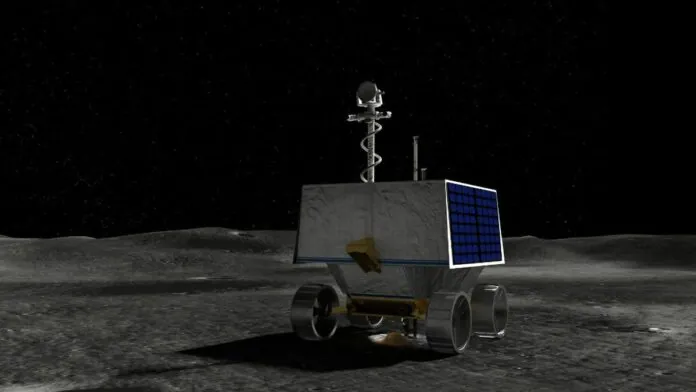© ROOT-NATION.com - Use of content is permitted with a backlink.
NASA’s next lunar rover is one step closer to starting its lunar mission. The Volatiles Investigating Polar Exploration Rover (VIPER) is set to launch to the moon later this year, and it just hit a major milestone, mission officials said.
“All onboard VIPER instruments are installed, and the device is more than 80% built! – said project manager Dan Andrews on the NASA blog. “This is a great achievement and demonstrates the significant progress made by the dedicated VIPER team, who look forward to seeing the rover put together.”

VIPER will land near the moon’s south pole and search for water ice and other resources that could help future NASA astronauts as part of the Artemis III mission, currently scheduled for 2026. The rover will spend 100 days wandering around the moon’s south pole, collecting data that will show where water ice is most likely to be and how easy it is to access. In the process, VIPER will become the first-ever resource mapping mission on another Solar System body. Such maps will be one of the most important steps in establishing a long-term human presence on the Moon.
Various lunar orbiting missions have previously collected data on water, but VIPER will do so directly from the surface, scanning it with scientific instruments and probing the soil at various depths with a 1m drill. Some of the regions VIPER will explore are permanently shadowed craters, which are among the coldest places in the solar system, and their bottoms, scientists believe, are covered in ice.
Testing the VIPER systems is a critical phase of the mission. Dan Andrews explained that as the team assembles and installs the various subsystems on the rover, they perform special tests that allow the team to confirm that parts such as cable harnesses and connectors between systems are working.
“You might think, ‘Of course what we’ve set up must work!’ But it is important to remember how complex these space systems are, in particular, planetary rover systems, says Andrews. – Sometimes we perform even more complex tests, for example, we send a command to the Near Infrared Volatile Spectrometer subsystem (NIRVSS) to take a picture: Was the picture taken successfully? Is the image’s field of view correct? Did the image get into the rover’s avionics for further transmission?”

This approach ensures that the NASA team will not discover problems that could affect VIPER’s performance at a later stage or, worse, once it is already on the lunar surface. “So we’re testing on the fly to reduce the risk later when we’re doing environmental tests of the whole rover. “That way, if it’s not working as expected after one of the tests, we know it was working fine before, so that can help us solve the problem faster,” Andrews said. – The pace at which we have been working on building and testing subsystems has been crazy lately, and we have made significant progress.
Read also:
- NASA may refuse to send samples of Martian soil to Earth
- NASA has completed the preparation of the VIPER robotic lunar rover


